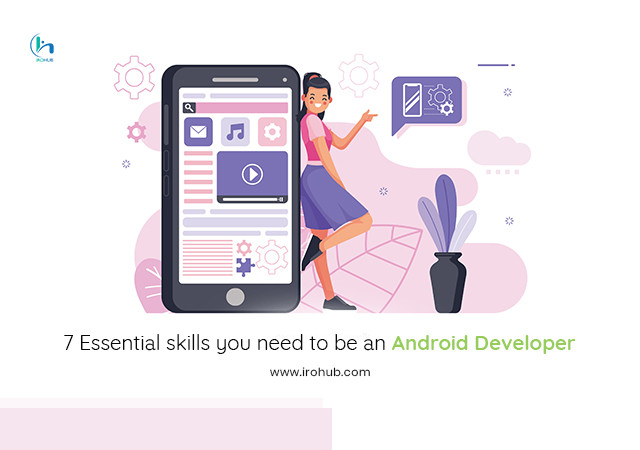Android app development needs a profound perception of programming and design. When addressing a new technology for the initial time, it often accommodates to break it down into sections. If you’re an accomplished web developer, many of the ideas and technologies required in Android app development will be similar to things you previously know – although building apps for mobile devices often demands knowledge of a number of more nuanced thoughts. Mobile devices have more miniature screens, more simplistic processors. Above all in the case of Android – many different manufacturers, suggesting that developers want to have code flexible and account for different user interface situations.
1. JAVA
Java is the programming language that underpins all Android app development and so our Android training in Cochin includes Java for sure. For those who have completed most of their programming knowledge in languages like JavaScript and Ruby, there is a chance to have a training curve when drawing up the Java programming language. but that is especially for the primary time.
Like JavaScript and Ruby, Java is object-oriented, but it is also more stringent about managing data types. Developers have to be much more concerned with their code, explaining the types of data their mobile applications plan to operate with and more particularly designating limited memory resources.
2. Conclusion OF XML
XML was created as a regular way to encode data for internet-based mobile apps. It is a structured markup language, according to many features in common with HTML – you may notice the angled brackets, the <opening> and </closing> tag types and the difficult nesting of elements.
In short, it allows data to be transferred between devices in a way that can be interpreted consistently. In the Android world, developers practice XML to create layouts that serve as the foundational UI description for Android applications.
3. ANDROID SDK
SDK stands for Software Development Kit. The Android SDKs are modules of Java code that give developers a path to mobile device purposes. The purposes can be a camera and accelerometer.
One key element of the Android SDK is a library named Gradle. Let’s say that you want to combine a social media floor like Facebook with your app. You would download a code library (or SDK) from Facebook, and then say Gradle that you’re practicing it so that when your application compiles, your code tarries well prepared.
4. ANDROID STUDIO
The integrated development environment (IDE) of decisions for Android developers is described in Android Studio. Android Studio is created on top of the well-respected IntelliJ IDE, and it appears with exceptional out-of-the-box care for many of the most popular Android SDKs.
Android Studio also highlights many of the abilities developers expect of a full-featured IDE. Code conclusion helps get auto-complete recommendations as you type. Code debuggers let you pass through your code to recognize the source of failures.
5. APIS
As an Android app developer, you’ll likely require to cooperate with many other services. For example, you may require to provide your users to obtain a calendar from third-party service or control the stock market.
An Android app development company typically offers APIs and will tell you precisely how to query them for data in a uniform and reliable way. While you’re free to communicate with any existing API, Google also makes it very simple to combine their own APIs from your Android app.
6. DATABASES
If your app manipulates large amounts of data, most of it seemingly won’t live on you
r device at any provided time. Instead, your app will possibly communicate with a database existing outside of your phone. Cloud services like Firebase or Parse present simple APIs to collect data in the cloud and make it open across devices.These platforms also usually provide Java libraries that you can plug into your app, producing it easy to cache some of the details on the user’s device. This syncing of data within local storage and the distant database is required. It is only then you can let users use the app during they’re offline.
7. MATERIAL DESIGN
In contrast to opponents like Apple, Google has not historically managed a steady pattern aesthetic across their products. In recent years, that has transformed. Google has published a set of forward-thinking interface guidelines and measures called Material Design, that is staying rolled out opposite all their products.
These measures include tips for how to layer multiple elements on the screen and practice particular styles like drop shadows. You’ve apparently seen Material Design in actual life if you’ve used the new Google Drive app or the latest Inbox by Gmail app on mobile.
BONUS! A GOOD IDEA
Like any other app you build, good performance is only practical if you’re trained well. Before you get started producing any mobile application, take time to consult our Android app development course in kochi. Our trained tutors can support you to iterate on your idea as you build your first Android application.








Post Comments (0)